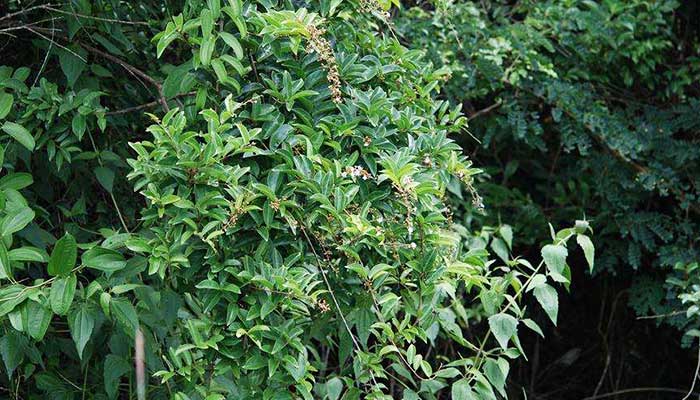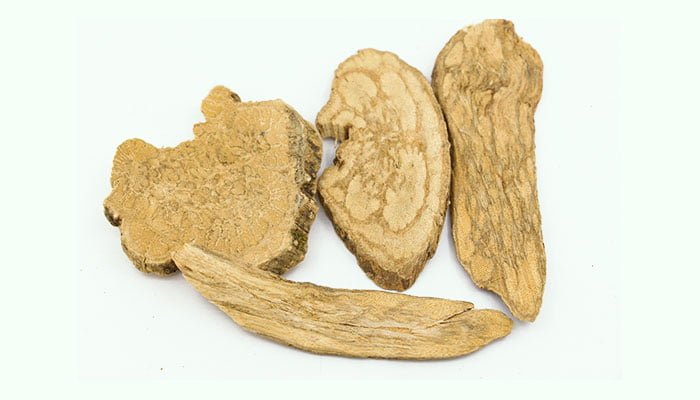What Is Ding Gong Teng
Ding Gong Teng commonly known as Caulis Erycibes is the vine of Erycibe obtusifolia or Erycibe schmidtii, which is a woody liana belonging to the family Convolvulaceae. It is a practical Chinese herbal medicine, which first appeared in the 1977 edition of the Chinese Pharmacopoeia.
There are about 70 species of Erycibe, which are mainly distributed in tropical Asia. Among them, only a small number of species are distributed in Australia. Some of these plants are used medicinally.
Erycibe obtusifolia often grows in wet dense forests or roadside thickets in valleys. They are distributed in Vietnam, and the central and coastal islands of Guangdong, China.
Erycibe schmidtii often grows in dense and sparse forests in valleys at altitudes of 250-1,200 meters. At present, they have not been cultivated by artificial introduction. They are found in Bangladesh, northeastern India, Myanmar, Thailand, Vietnam, and China.

The vines of Erycibe obtusifolia and Erycibe schmidtii can be gathered in any season. People gather their vines, remove impurities, wash them with water, cut them into pieces, dry them in the sun, and make them into Chinese herbal medicines.
Ding Gong Teng contains baogongteng A, erycib alkaloid Ⅱ, baogongteng C, scopolin, scopoletin, β-sitosterol, daucosterol, long-chain fatty alcohol, scopoletin, and chlorogenic acid.
Generally, the solid Ding Gong Teng with flower-like heterotypic vascular bundles in the section is preferred.
According to the Chinese Pharmacopoeia, the medicinal nature of Ding Gong Teng is relatively warm, with slight toxicity and pungent taste. It has a certain therapeutic effect on the pathological changes of the liver, spleen, and stomach meridians.
In traditional Chinese medicine, it is often used to expel wind and dampness, alleviate swelling and relieve pain, and treat acute rheumatic arthritis, chronic rheumatic arthritis, rheumatoid arthritis, hemiplegia, numbness of limbs, aching pain of waist and legs, traumatic injury, sciatica, lumbar muscle degeneration, spinal osteoarthritis, traumatic arthritis, renal colic, and primary glaucoma.
There are more than 30 kinds of traditional Chinese medicine prescriptions containing it, such as Feng Liao Xing Feng Shi Die Da Yao Jiu, Hai She Yao Jiu, and Ding Gong Teng Jian Di Yan Ye.
Benefits
- Anti-inflammation, inhibiting croton oil-induced ear swelling in mice and egg white-induced joint swelling in rats.
- Increasing pain threshold and inhibiting pain induced by cold stimulation and mechanical stimulation in experimental knee osteoarthritis rats.
- Anti-oxidation, scavenging DPPH free radicals and inhibiting red blood cell peroxidation.
- Increasing the number of T lymphocytes and spleen-specific antibody-forming cells and improving immunity.
- Expelling wind and dampness, treating wind-cold-dampness arthralgia, numbness of limbs, aching pain of waist and legs, and hemiplegia.
- Alleviating swelling and relieving pain, treating traumatic injuries and pain caused by ecchymoma.
- Scopoletin can reduce the activity of Huangheyin oxidase in the liver of mice, inhibit the synthesis of uric acid, and promote the excretion of uric acid.
- Studies have found that baogongteng A can directly act on M-cholinergic receptors, showing a muscarinic-like effect. It has the effect of lowering intraocular pressure and miosis.
Combinations
- It can be used in combination with Gui Zhi (Ramulus Cinnamomi), Ma Huang (Ephedra), Dang Gui (Radix Angelicae Sinensis), etc. to treat wind-cold-dampness arthralgia and hemiplegia.
- It can be used in combination with Gui Zhi (Ramulus Cinnamomi), Qiang Huo (Rhizoma et Radix Notopterygii), Ru Xiang (Frankincense), etc. to treat wind-cold-dampness arthralgia, numbness of hands and feet, and aching pain of waist and legs.
- It can be used in combination with Ren Dong Teng (Caulis Lonicerae Japonicae), Hai Feng Teng (Caulis Piperis Kadsurae), Ji Xue Teng (Caulis Spatholobi), etc. to treat wind-cold-dampness arthralgia, numbness of hands and feet, waist and knee joint pain.
Side Effects
- Ding Gong Teng is poisonous, and its main toxic component is scopoletin.
- Overdose of it may cause shortness of breath, drop in blood pressure, paralysis of limbs, profuse sweating, slow heartbeat, tearing, or other toxic reactions.
- There have been reports that its injections may cause exfoliative dermatitis.
Precautions and Warnings
- The dosage of Ding Gong Teng should be controlled at 3-6g.
- It can be made into decoctions, medicinal liquors, eye drops, or injections.
- People who are allergic to Ding Gong Teng should not take it.
- Frail patients should not take it.
- Pregnant and breastfeeding women should not take it.
